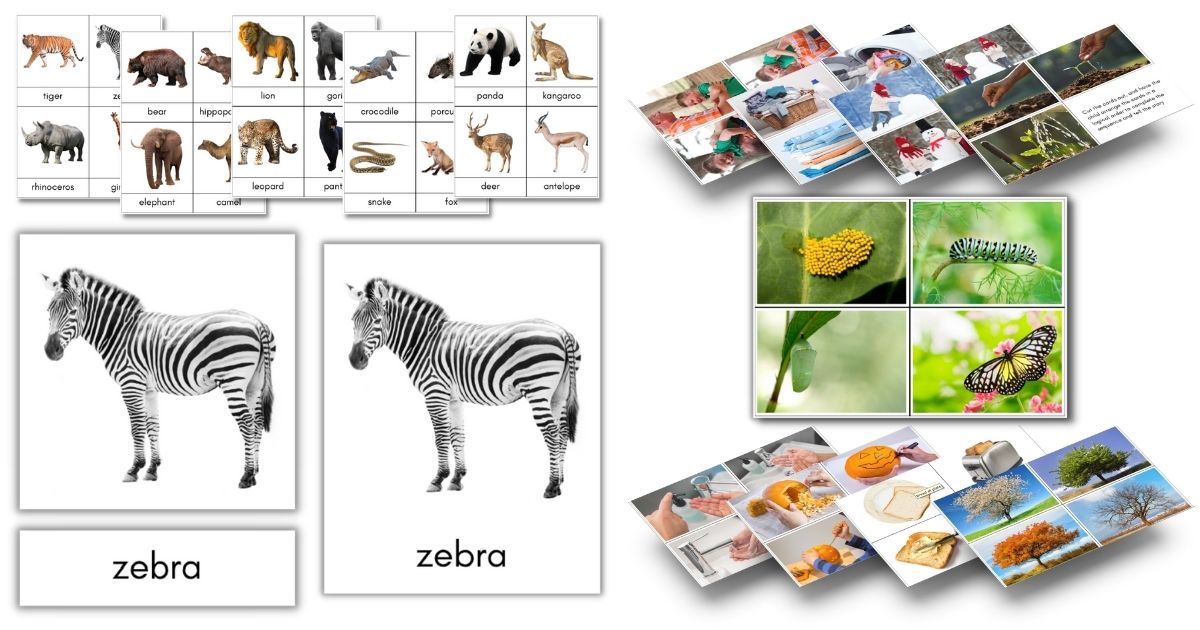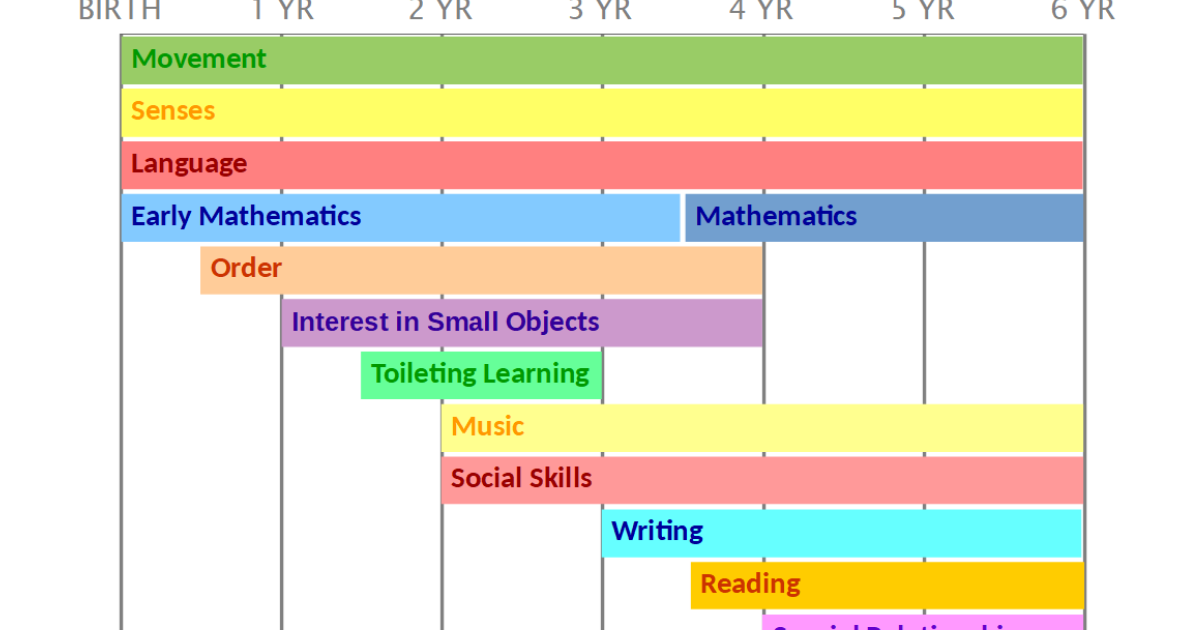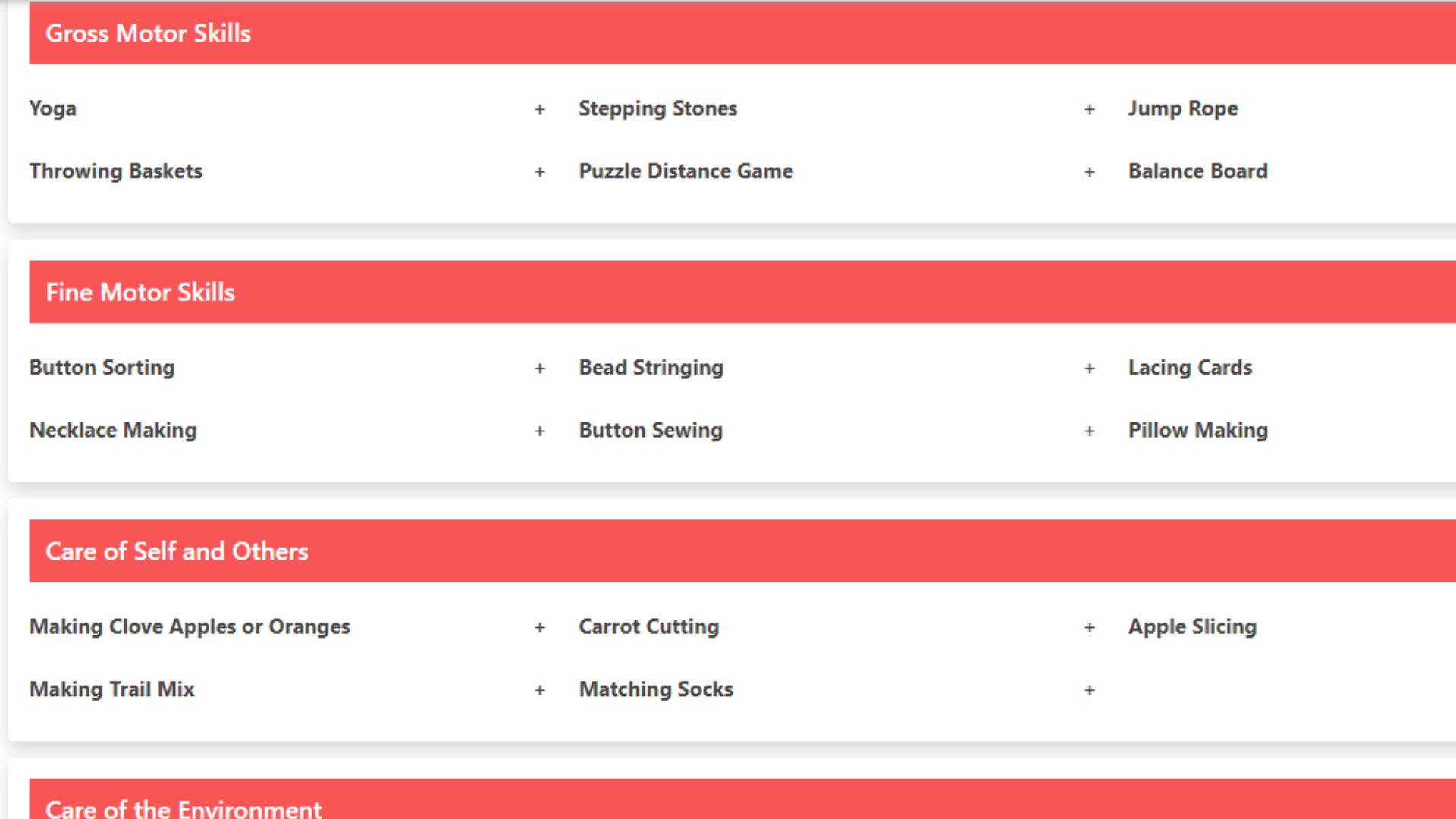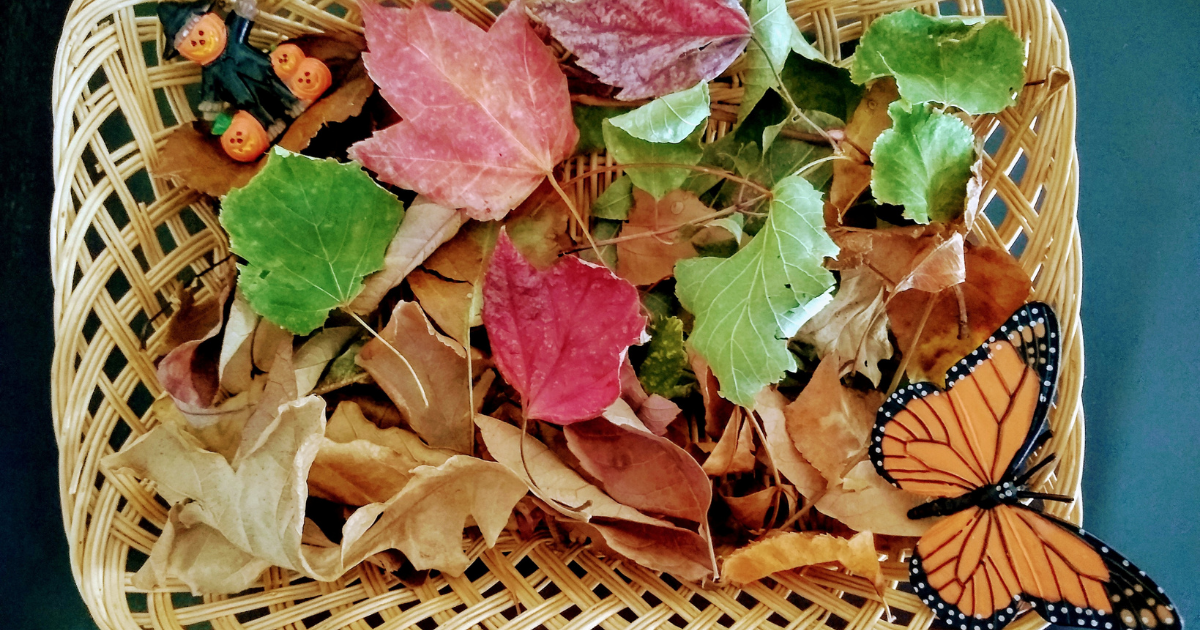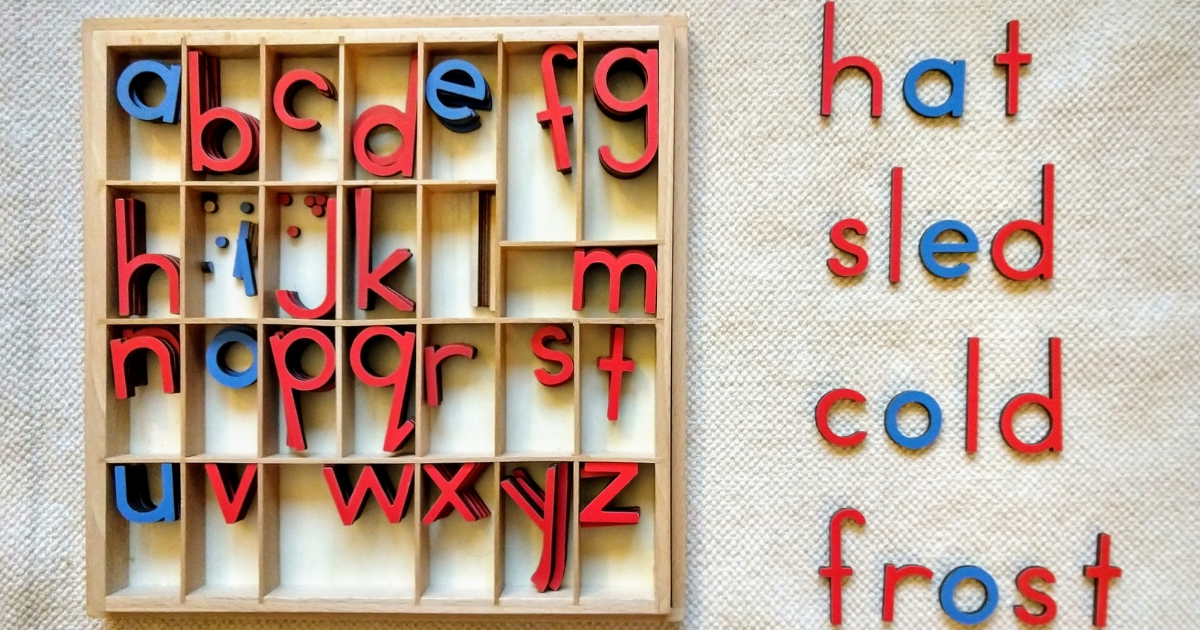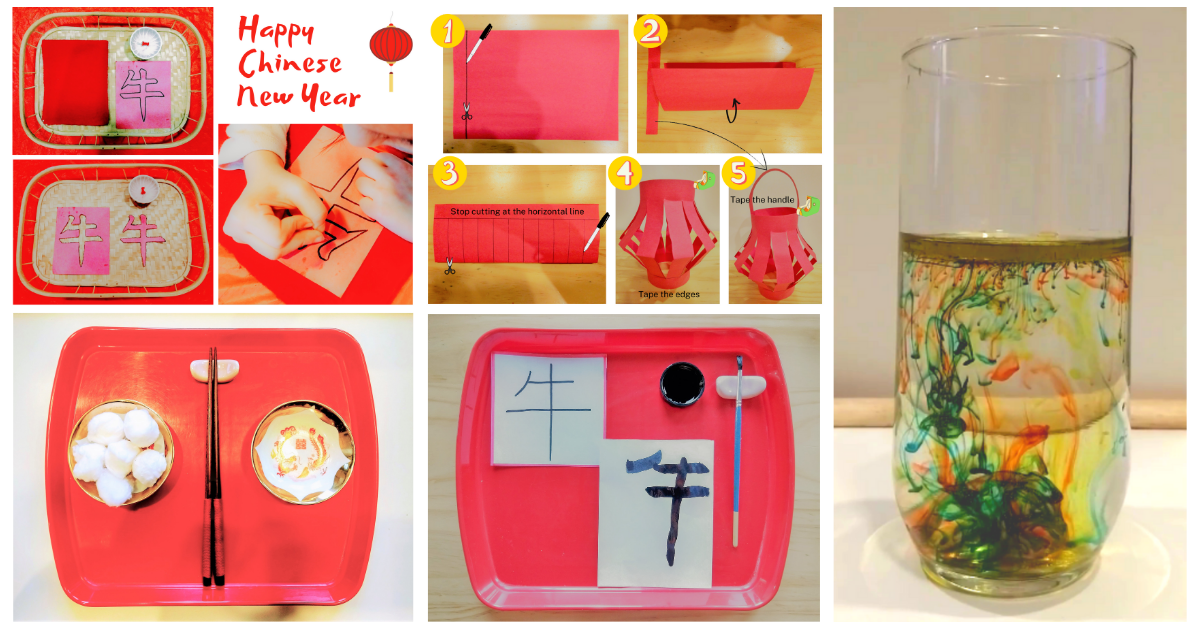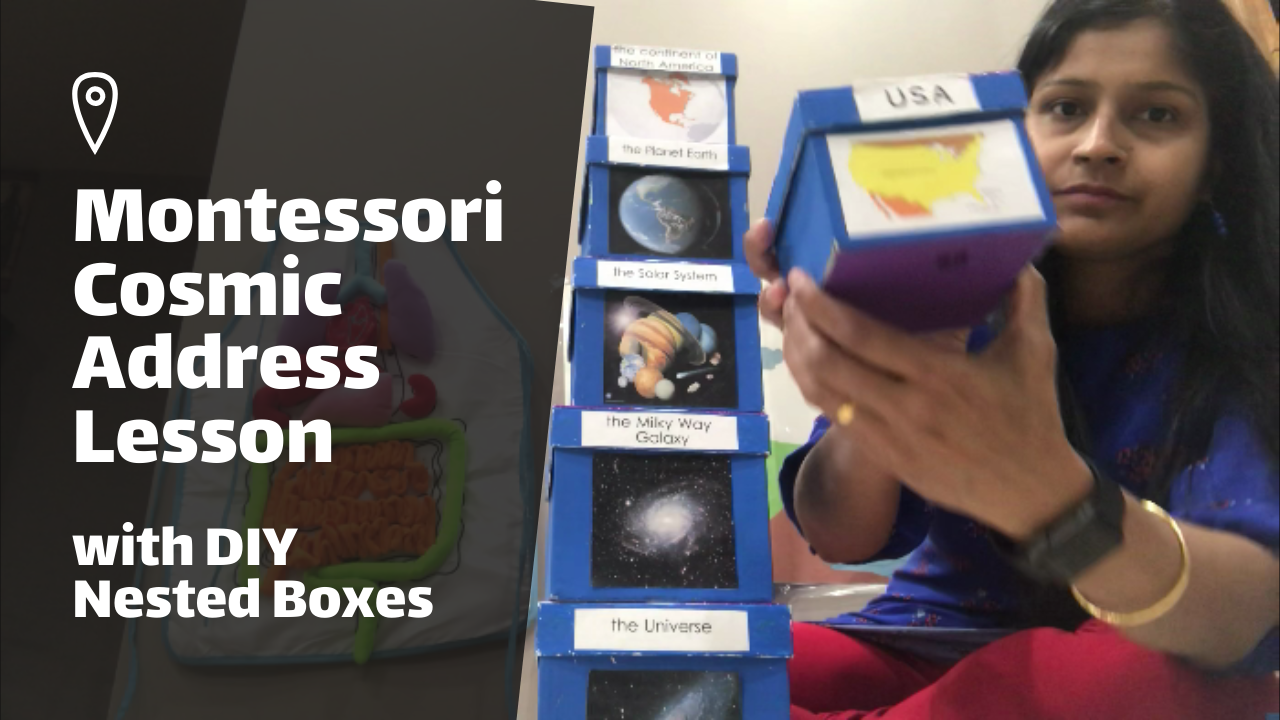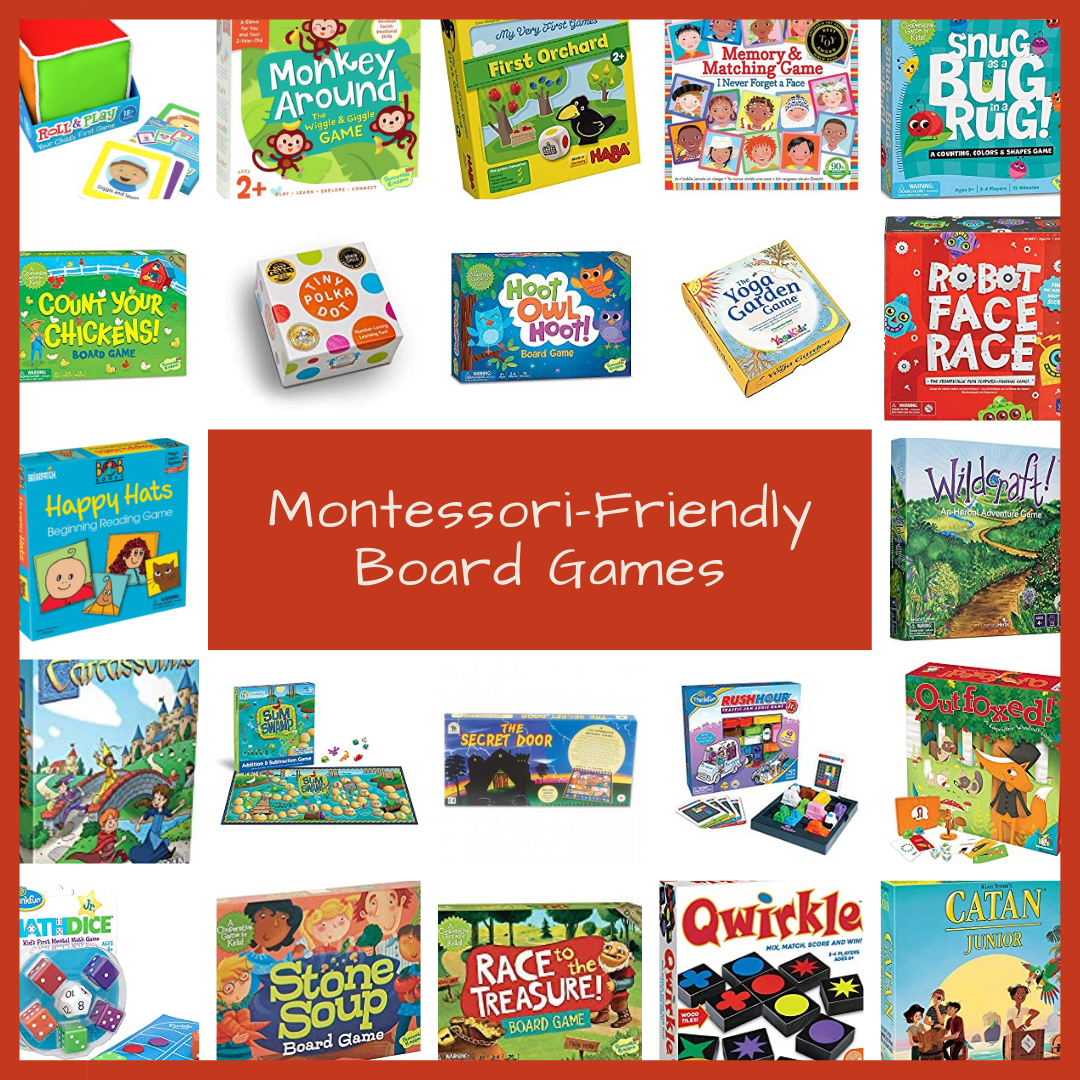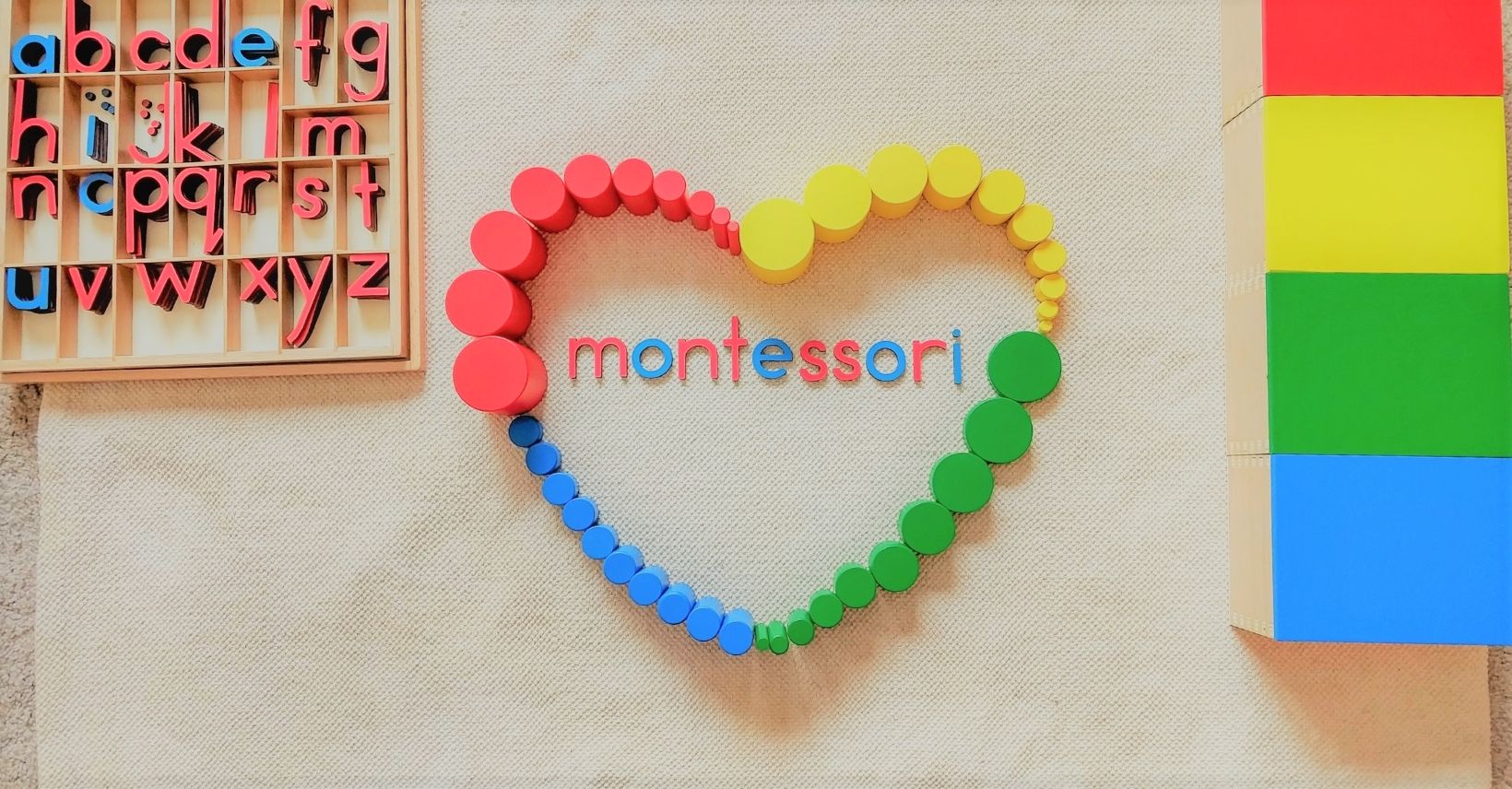Gross Motor Skills
Provide a yoga mat and a few yoga cards at a time.
These are a fun way to help kids practice their balance.
A small jump rope can easily be kept indoors, just show your child where they can use it and avoid any disasters.
Take two baskets and a set of small bean bags or soft balls and show your child how to throw the balls from one basket to the other.
Take any puzzle your child loves and put it in the living room. Have them build the puzzle in their room so they are walking back and forth each time to find a piece. This kind of distance game is used all the time in Montessori classrooms, to keep kids moving and encourage them to practice keeping information (i.e. what piece they need) in their mind while they walk.
These can be pricey, but they provide lots of opportunities for gross motor work inside.
Fine Motor Skills
Give your child a bunch of buttons differing in size or color and little bowls to sort them in. For example, if you give them red, blue, and green buttons, give them three little bowls to sort them in. Any type of objectS your child is interested in can be used for the sorting activity!
Let your child practice threading using pasta, pony beads, or whatever attracts them onto a knotted piece of string or a shoelace.
These help children practice the up-down pattern of sewing before they're ready for a needle. If you don't want to buy them, simply punch evenly spaced holes around the edge or a card stock shape and let your child practice with a shoelace.
This is usually the first activity where children use a needle, but it is mostly a yarn needle, so it is not sharp. They'll also need a variety of beads. You will need to tie the knot, but even young children can thread the needle with practice so encourage them to give it a try.
All you need is a piece of fabric, a needle, and thread. Show your child how to thread the needle, tie a knot and sew on the button. Most children are ready for this around 3 1/2 or 4 years old, with supervision.
When a child has mastered button sewing, they are ready for pillow making. Show them how to sew two pieces of fabric together and stuff with anything available at home.
Care of Self and Others
Provide your child with a small tray with a bowl of whole cloves and an apple or orange to poke them into. The small size of the cloves makes this great for fine motor development and your child will create something that smells beautiful to decorate the house or give to a friend.
Even kids who don't like eating carrots love cutting them and preparing them for others. It's helpful if you provide your child with a tray with everything they'll need: an apron, bowl for water, scrub brush, peeler, small cutting board, wavy chopper (look in Amazon) and sponge or small towel for spills. Show your child how to wash, peel and cut a carrot and then let them try on their own. For toddlers, use pre-washed and peeled baby carrots so it's easier to chop.
Another popular Montessori food prep activity is apple slicing. For this one your child will need an apron, bowl for water, scrub brush, cutting board an apple slicer. For young children, it helps to cut the apple in half horizontally first so it's easier to slice. You can use any food your child likes for food prep. Orange peeling and hard-boiled egg peeling are also fun.
Give your child large containers of several different snack items they like (dried fruit, nuts if they're old enough to eat them, cereal, etc.). Give them a measuring scoop and let them scoop some of each item into a big empty container and mix it up. If you like, make this available to them on a shelf they can reach so they can get their own snack. For an older child, you can write a simple recipe (e.g., 2 scoops of cereal, 1 scoop of cashews, etc.) to make it more challenging.
Put your child in charge of matching socks when it's laundry time—a great lesson in visual discrimination, as well as responsibility.
Care of the Environment
This is always a popular activity in Montessori classrooms and all you need is a small spray bottle (full of water or water mixed with white vinegar), a small squeegee, and a sponge.
Many young children love scrubbing because they can see the tangible results! Scrubbing often comes with water spills and mess, and that is ok. Learning how to clean the spills is part of the purpose. You can make this super simple with a tub, scrub brush, and towel, or add extra elements like soap and a bottle brush to clean crevices. Children love scrubbing tables, chairs, rain boots or their waterproof toys!
An extension of scrubbing, your child can wash a baby doll with a small washcloth.
An extension of scrubbing, your child can wash a toy truck with a small washcloth.
Taking care of indoor plants is something even very young children can do. All your child needs is a small dish for water and a sponge. Then they can wipe the dust off of the leaves of indoor plants.
Provide a small watering can and show your child how to check if an indoor plant needs water.
Get an inexpensive bouquet of flowers and let your child trim the stems, fill small vases with water, and arrange the flowers in little vases around the house. You can also continue the same process everyday by buying some fake flowers for arranging.
Eggshells are great fertilizer. Show your child how to grind them with a mortar and pestle and sprinkle them in potted plants.
Sweeping the floor with a small broom and a dustpan is one of the first ways toddlers and young children can learn to help take care of the house. If they're getting stir-crazy, give them a purpose and invite them to help you sweep.
All you need for this one is a mixing bowl, pitcher for water, whisk, and a small dropper bottle with dish soap. Your child will have fun adding soap and mixing to make bubbles, but make sure to put them in charge of the clean up too, that's where a lot of the learning happens!
Montessori Activities at Home (view other subjects )
Practical Life | Sensorial | Language | Mathematics | Culture & Science | Art
